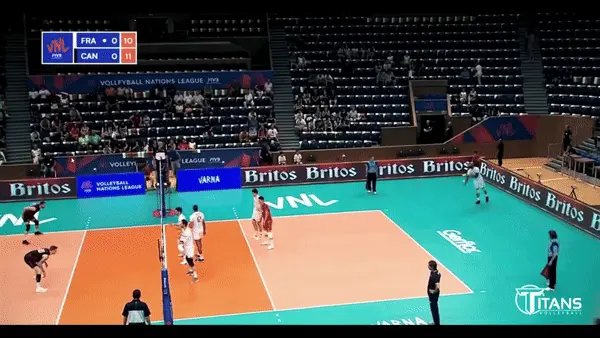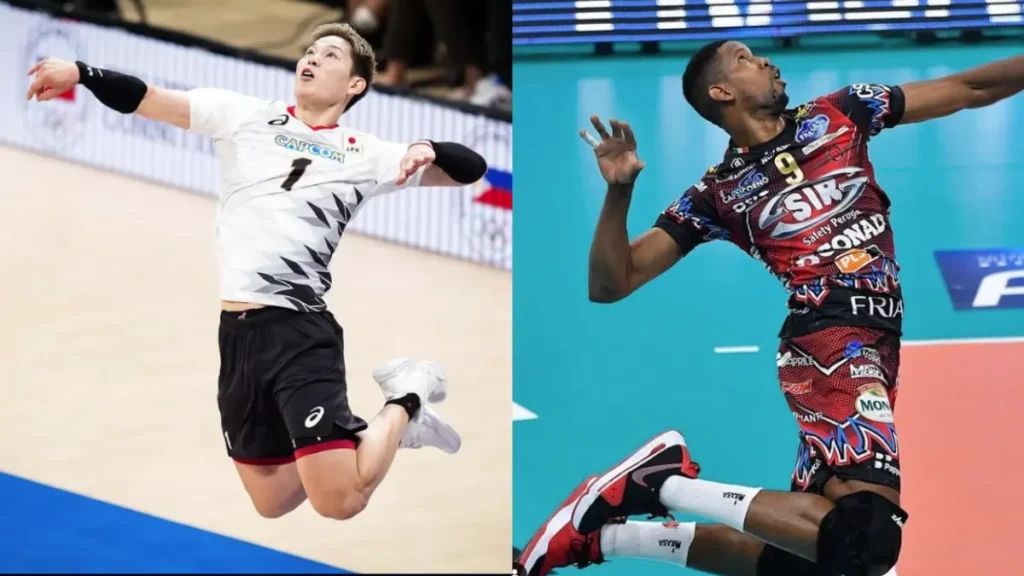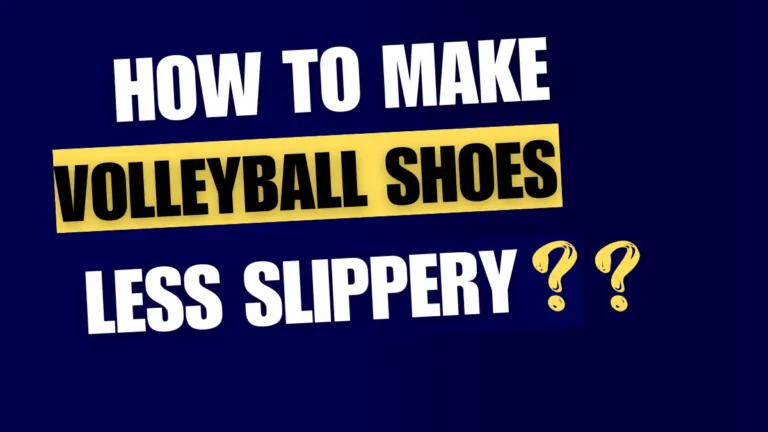What is an Ace in Volleyball? A Comprehensive Guide for Beginners

Volleyball can change in the blink of an eye, which is why it’s important to understand its scoring techniques. It has many tactics, such as kills, digs, blocks, and aces, among others. These can be used to defeat the opposing team. Each of these moves has its own method that players need to learn.
One important moment in volleyball is the serve, which can result in an ace. An ace happens when a player serves the ball to the opposing team in such a way that they can’t return it, and the server’s team gains a point.
If you want to know more about what an ace is, its different types, how to score an ace, and why they’re so important in the game, let’s discuss it in detail.
What is an Ace in Volleyball?
An ace in volleyball is when you serve the ball and score immediately. The other team can’t touch it or hit it back.
In simpler terms, a player serves the ball over the net, and the other team can’t touch it or keep it in play. The ball lands directly on the court or the receiving team makes an error trying to handle the serve.
Key Points About Aces:
- Aces are scored on serves only
- The receiving team doesn’t touch the ball or can’t return it successfully
- Aces result in an immediate point for the serving team
- They’re considered one of the most exciting plays in volleyball
Types of Aces in Volleyball
There are several ways a player can score an ace in volleyball. Now we’ll check out the kinds of aces you see a lot:
1. Direct Ace
A direct ace occurs when the served ball lands directly on the opponent’s court without being touched by any player. This type of ace is often the result of a powerful or well-placed serve that catches the receiving team off guard.
2. Touch Ace
A touch ace happens when the receiving team manages to make contact with the served ball, but can’t control it enough to keep it in play. The ball might graze a player’s hands or arms before going out of bounds or hitting the floor.

Video credit: Titans Volleyball (https://www.youtube.com/watch?v=xPUApxVPWkU)
3. Rotation Error Ace
Sometimes, an ace can be scored due to a rotation error by the receiving team. If the players are out of position when the serve is made, the point is awarded to the serving team as an ace.
4. Let Ace
A let ace is a rare occurrence where the served ball touches the net but still goes over and lands in the opponent’s court untouched. This type of serve is legal in volleyball and can result in an ace if the receiving team fails to return it.
How to Score an Ace in Volleyball
Scoring an ace in volleyball requires a combination of skill, strategy, and sometimes a bit of luck. Here are some tips for players looking to improve their chances of serving an ace:
- Develop a powerful serve: Practice your arm swing and contact point to generate more power behind your serves.
- Work on serve placement: Aim for areas of the court that are harder for receivers to reach, such as the back corners or the seams between players.
- Use different serve types: Mix up your serves with float serves, jump serves, and topspin serves to keep the opponents guessing.
- Study the receiving team: Look for weaknesses in the opposing team’s receive formation or individual players who struggle with serve reception.
- Stay focused and confident: Mental preparation is key to executing a successful serve under pressure.
The Importance of Aces in Volleyball
Aces play a crucial role in volleyball matches for several reasons:
1. Direct Points
The most obvious benefit of an ace is that it results in an immediate point for the serving team. In a tight game, these quick points from aces can change who wins.
2. Momentum Shift
Scoring an ace can provide a big boost to a team’s morale and momentum. It can energize the serving team while potentially demoralizing the receiving team.
3. Psychological Advantage
A player who consistently serves aces can create doubt and uncertainty in the minds of the receiving team. This psychological edge can lead to more errors and hesitation from the opponents.
4. Strategy Disruption
Aces can force the receiving team to adjust their formation or strategy, potentially taking them out of their comfort zone and affecting their overall performance.
Defending Against Aces
While aces are powerful offensive weapons, there are ways for teams to defend against them:
- Improve serve reception skills: Players especially libero and back row specialists should practice their passing technique to better handle tough serves.
- Communicate effectively: Team members need to call out who’s taking the service to avoid confusion.
- Study opponent’s serving tendencies: Knowing a server’s preferred targets can help receivers anticipate where the ball might go.
- Maintain proper positioning: Players should ensure they’re in the correct spots on the court to cover as much area as possible.
- Stay focused and ready: Being alert and prepared for each serve can make a big difference in successfully receiving the ball.
Famous Ace Servers in Volleyball
Throughout volleyball history, certain players have become known for their exceptional serving skills and ability to score aces. Although specific data isn’t available in this regard, however, the following players are known for their quality and powerful serves.

While there isn’t any documented data so we won’t name specific individuals, some characteristics of great servers include:
These players often become key assets to their teams, capable of turning the tide of a match with their serving prowess.
Aces in Different Levels of Volleyball
The frequency and impact of aces can vary depending on the level of play:
Beginner Level
At the beginner level, aces are more common due to less developed passing skills. Servers focus on getting the ball over the net consistently rather than using advanced techniques.
Intermediate Level
As players improve, aces become less frequent but still occur regularly. Servers start to develop more powerful and targeted serves, while receivers improve their passing abilities.
Advanced and Professional Level
At the highest levels of volleyball, aces are less common but more impactful. Servers use complex techniques to make their serves difficult to receive, while passers have highly refined skills to handle tough serves.
Training to Improve Ace Serving
For players looking to increase their ace-serving abilities, here are some training tips:
- Practice serve accuracy: Set up targets on the court and aim for them consistently.
- Build arm strength: Use weight training and exercises to increase serving power.
- Work on different serve types: Learn and practice various serving techniques to expand your arsenal.
- Video analysis: Record your serves and watch to find what you need to work on.
- Simulate game situations: Practice serving under pressure by setting up mock game scenarios.
- Seek feedback: Work with coaches or experienced players who can provide tips and critiques on your serving technique.
The Role of Aces in Team Strategy
Coaches and teams often incorporate ace serving into their overall game strategy:
- Serving rotations: Teams may adjust their rotation to have strong servers in key positions.
- Targeting specific receivers: Servers might aim for players who struggle with passing.
- Momentum management: Coaches may use timeouts or substitutions to disrupt a hot server on the opposing team.
- Risk vs. reward: Teams must balance aggressive serving for aces with the risk of service errors.
Aces in Different Volleyball Formats
The impact and frequency of aces can vary in different volleyball formats:
Indoor Volleyball
In traditional indoor volleyball, aces are a regular occurrence and an important part of the game’s scoring system.
Beach Volleyball
In beach volleyball, aces can be more challenging to achieve due to the smaller court size and fewer players. However, they remain a valuable weapon, especially given the windy conditions often present in outdoor play.
Sitting Volleyball
In sitting volleyball, a Paralympic sport, aces occur but may be less frequent due to the lower net height and different movement dynamics of the players.
Concluding Remarks
Aces are an exciting and crucial element of volleyball. They score right away, change the game’s flow, and can shake up both teams mentally. Understanding what an ace is and how it’s achieved can enhance your appreciation of the sport, whether you’re a player looking to improve your serve or a fan enjoying the game from the sidelines.
While scoring aces requires skill and practice, defending against them is equally important. The interplay between powerful serves and skilled receivers is part of what makes volleyball such a dynamic and engaging sport.
Whether you’re just starting out in volleyball or you’re a seasoned player, the ace serve remains one of the most thrilling and impactful plays in the game. Keep working on your serves. Stay focused. Maybe you’ll get an ace in your next game!
Frequently Asked Questions
Can a serve that touches the net be considered an ace?
Yes, a serve that touches the net can still be considered an ace if it goes over and lands in the opponent’s court untouched. This is known as a “let ace.”
How many points is an ace worth in volleyball?
An ace in volleyball is worth one point. Like any other scoring play in volleyball, an ace results in a single point for the serving team.
What’s the difference between an ace and a service winner?
An ace happens when you serve and score right away. The other team doesn’t touch the ball or try to hit it back. A service winner, on the other hand, is when the serving team wins the point after the receiving team touches the ball but fails to return it successfully.
Are jump serves more likely to result in aces?
Jump serves can lead to more aces due to their increased power and potential for topspin, which can make the ball drop quickly after crossing the net. However, they also come with a higher risk of service errors.
Can you score an ace on an underhand serve?
An underhand serve that lands in the opponent’s court untouched or that the receiving team fails to return successfully still counts as an ace. While underhand serves are generally easier to receive, they can sometimes catch opponents off guard, particularly if they’re not expecting it.





